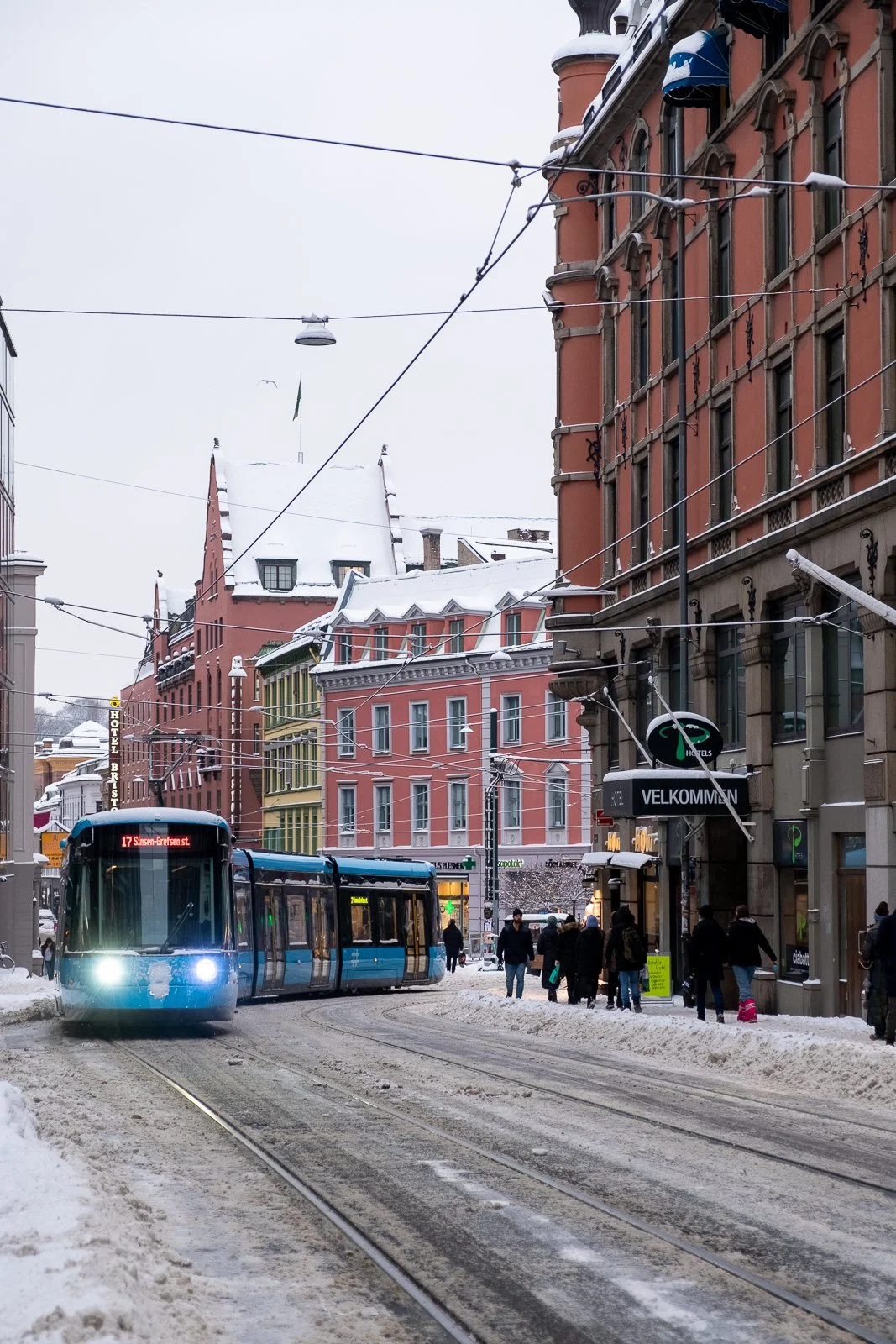SENTRUM
Oslo, Norway
A ferry boat departs from the City Hall pier. The development of the City Hall transformed the waterfront area into a civic living room. Since the early 20th century, the seaside area of the downtown has continued to change. Today, the former industrial docks now comprise the administrative and cultural heart of the city.
The ferry system connects commuters and visitors to islands of the inner Oslo Fjord. In recent years, there has been a change to all-electric ferries for operation in the Oslo Fjord in line with the city's ambitious sustainability goals.
Sentrum
Sentrum, the city-centre, marks the innermost point of the Oslofjord.
The term "downtown" dates to the 18th century and describes the cultural, political, and geographic heart of a metropolis. In Oslo, this vital core is Sentrum, a captivating embodiment of these defining attributes. The area lies outside the district's administrative structure and is overseen by the city council itself.
Sentrum includes the locality of streets and buildings that have come to define the city at-large and has witnessed radical urban transformations while preserving its historical identity and enshrining cultural values in iconic landmark developments. The city centre hosts a myriad of attractions, restaurants, cafes, accommodations, and cultural institutions catering to visitors and locals alike.
In Sentrum, one finds an array of landmarks and institutions. Here, one can encounter the iconic City Hall, serving as the city council's seat and administrative hub. It also acts as a festive hall for local and global events, including the esteemed Nobel Peace Prize ceremony and the gathering of NATO foreign ministers.
Sentrum features the city's grand promenade and monumental axis, Karl Johans Gate. On the east end of this corridor is Oslo's Central Station; on the west, the Royal Palace Park provides an elegant green expanse and respite open to the public. The National Theatre and the National Assembly - the Storting - are also located within this vibrant area.
The historic Akershus castle and fortress stands as a testament to the area's storied past and rich history. Adjacent to the ramparts of the medieval fortress and castle is Kvadraturen, Oslo's historic core.
Major urban redevelopment plans have revitalized the waterfront area as one of Oslo's cultural centres, including: the National Museum, Norway's most extensive collection of art, architecture and design; Deichman Library, a dynamic public space that opened in 2020; and the iconic Oslo Opera House, the home of the Norwegian National Opera and Ballet and one of the most visited buildings in the country; the sloping angles of the roof create a landscape of marble ascended by millions of locals and visitors every year who take in the views over the fjord and, at times, artistic and musical performances on the rooftop.


















































